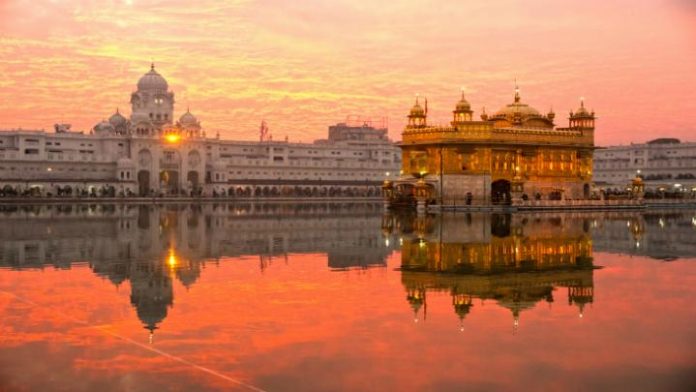The medical value travel (MVT) sector is seen as a major growth driver for the Indian economy. ‘Brand India’ still has work do on offering a patient-centric and tourist friendly approach, suggests Mihir Vora, Founder & CEO of India medical value travel facilitator, Magnus Medi
As far as anyone can remember, affluent people from Asian and African countries have been going to the West in search of advanced medical treatment for a variety of serious illnesses. Now, however, medical facilities in India, Thailand, Singapore, Hong Kong and elsewhere have become highly advanced and hospitals with an eye on comfort and even luxury have increased.
Overloaded healthcare facilities in the US and Europe combined with high treatment costs means that international patients from the West are now considering other countries for care. The imperatives for these medical travellers are cost savings as well as avoidance of waiting times.
One solution has come in the form of hospitals in Asia and the Middle East, which recognised the opportunity and applied for accreditation to the Joint Commission International (JCI). This enabled some US-based patients to get reimbursement of their healthcare costs from their insurance schemes – a win-win situation for both.
Thailand, considered by some as the Asian leader in medical tourism, has 64 JCI accredited hospitals which received 2.4 million overseas patients (measured as patient interactions with hospital services, rather than unique patients) in 2016, up from 1.8 million in 2014. By comparison, India has 38 accredited hospitals but received just about 495,000 patients from other countries (up from 427,000 the previous year).
Medical value travel (MVT) in India
The MVT business has been growing steadily in India over the past few years. The revenue emanating from this sector in 2015 was approximately US$3 billion and growing at 15-17% each year. The Indian Government’s policy think tank, the Niti-Aayog, has also identified MVT as a major growth driver for the Indian economy. According to other sources, the medical tourism sector in India could touch US$9 billion by 2020, provided certain steps are taken to promote and develop it.
A FICCI-IMS Health report published in 2016 points out that, compared to other MVT hubs, India is well positioned in terms of cost and clinical outcomes, as well as Alternative Therapies. But we lag behind in tourist friendliness and infrastructure, regulatory regime (relatively few hospitals with international accreditation), complaint resolution mechanism, etc.
Medical visa issuance should also be streamlined on regional or country specific countries as offered by Thailand (for GCC countries) and Malaysia (for western travelers, 90-day visa limit is exempted, visa extension up to six months). ‘Brand India’ needs to have more of a patient-centric and tourist friendly approach.
Inbound medical traveller sources
Other FICCI reports have pointed out that the patient inflow from Bangladesh is arguably the highest, while Iraq and Oman also sent a sizeable number in the past four or five years.
The number of patients coming to India in search of medical treatment from Bangladesh has grown from 60,000 in 2014 to 225,000 in 2017; from Iraq, it has ballooned from just 758 in 2014 to 47,640 in 2017 (many Iraqi patients also go to Iran). From Oman, the corresponding number has gone up from 5,000 to 28,000 (2014-2017), although a substantial proportion of those from UAE travel to US or Europe.
Asian countries receive up to 95% MVT from Africa and 93% from within Asia while only 39% of Europeans visit this region. About 45% of North Americans come to Asia as well, while a sizeable number go to Latin America.
Attractions of India as a healthcare destination
The majority of patients from neighbouring countries including the SAARC member states visit India because of the technologically advanced healthcare services that hospitals in this country can offer.
Apart from the cost factor and immediate availability of medical services, India offers a wide variety of healthcare services. Among the most in demand are cardiac health and cardiac surgery, orthopedic treatments, eye surgery, cosmetic and dental work, and infertility treatment (also known as assisted reproduction).
India is a primary destination for cardiology and cardiac surgery, alongside Thailand, Singapore, Malaysia, and Taiwan. For transplant surgery India is the only primary destination, while the others are secondary locations. For wellness and prevention as well as alternative therapies, India, Thailand and Malaysia are most preferred. Ophthalmology, weight loss surgery and spine surgery are additional opportunities to be developed in Indian hospitals.
In addition, India has a special advantage when it comes to “traditional therapies” like Ayurveda and herbal medicine, wellness, and yoga.
A final, undeniable advantage in India as a medical travel destination, is that a very large proportion of healthcare professionals are able to speak and understand English. A growing number of clinical specialists currently working in leading Indian hospitals have either been trained in the West or have worked there for a number of years. In addition to their highly developed clinical skills, these doctors have an excellent idea of what the patients in US or Europe are likely to expect.








 ©2024 All rights reserved LaingBuisson
©2024 All rights reserved LaingBuisson 


